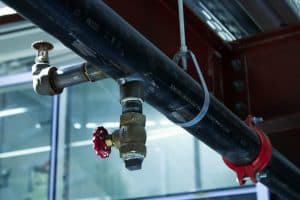Consistently servicing your sump pump is crucial in avoiding basement floods and extending its lifespan. Failing to perform maintenance can result in sudden malfunctions during intense rain storms or floods, resulting in significant damage to your house. During critical periods, a malfunctioning sump pump can lead to expensive repairs and significant water damage to your property. Regular maintenance not only helps save money but also gives reassurance that your pump is prepared to deal with any potential water issues, providing peace of mind. If problems are persistent, you might need a sump pump repair to keep your system running smoothly.
Tools and Materials You’ll Need
Before diving into the maintenance process, gather all the necessary tools and materials to make the task more accessible and efficient. Having the right equipment ensures you can perform a thorough and effective cleaning without any hitches. Here’s a list of items you’ll need:
- Gloves – To protect your hands from dirt and grime.
- Bucket – For holding parts or removing water.
- Garden hose – For rinsing the pump and basin.
- Wet/dry vacuum – Used for eliminating standing water and debris in the basin.
- Sump pump cleaner – Specialized cleaner to remove any buildup and residue.
- Scrub brush – This is used to scrub the basin and pump parts.
Step-by-Step Guide to Cleaning Your Sump Pump
Step 1: Turn Off the Power
Before you begin any maintenance, ensure the sump pump is unplugged. This step is crucial for your safety to prevent any risk of electric shock. For added protection, switch off the circuit breaker that powers the pump. Double-check to ensure that there is no electricity running to the pump before proceeding with the next steps.
Step 2: Remove the Sump Pump
Carefully lift the sump pump out of the basin and place it on a stable surface to avoid damage. This step requires some care because you don’t want to accidentally damage any pump components during removal. Lay down some old newspapers or a tarp to protect your surface from dirt and water.
Step 3: Clean the Basin
Using your wet/dry vacuum, remove any standing water from the basin. Once the water is cleared, scrub the basin walls with a brush and a sump pump cleaner to eliminate any residue or debris. This step is crucial for avoiding blockages and guaranteeing the efficient functioning of your pump. Removing all the sludge and buildup allows the pump to work more efficiently.
Step 4: Inspect the Pump for Damage
Verify the condition of your sump pump by looking for damage indicators like cracks, rust, or strange noises. Pay close attention to moving parts and electrical connections. If significant damage is found, consider replacing the pump, as it may be a more cost-effective and safer option.
Step 5: Clean the Pump
Rinse the pump with a garden hose, ensuring that all components are free of grime and debris. Use a scrub brush to clean smaller parts that are harder to reach. This step is essential for keeping the pump’s motor and moving parts free from any obstructions that could impede its function. It’s like giving your sump pump a fresh start, making sure it can operate at its best capacity.
Step 6: Reassemble and Test the Pump
Reattach the sump pump to the basin, reconnect any necessary pipes and hoses, and ensure they are securely fastened. Restore power to the unit and conduct a test run by pouring water into the basin to ensure it’s functioning correctly. Watching the pump in action can provide confidence in its reliability.
Regular Maintenance Tips
Consistent care is critical to the longevity of your sump pump. Here are some regular maintenance tips to keep in mind:
- Every few months, test your sump pump by filling the basin with water to make sure it is working properly. Regular testing can help you identify issues before they escalate.
- Regularly check for indications of wear and tear, especially prior to the rainy season. By identifying any issues early on, you can avoid needless emergency repairs.
- Consider having a backup battery system in place to ensure pump operation during power outages. A backup system can be a lifesaver during storms or power failures.
When to Call a Professional
While homeowners can perform regular maintenance, there are times when professional help is advisable. If you encounter persistent issues, such as the pump not activating or unusual noises, it may be time to call in a professional plumber for a thorough inspection and repair. Expert plumbers has the knowledge and equipment needed to identify and resolve sump pump issues that may be too complex for a homeowner to handle.

